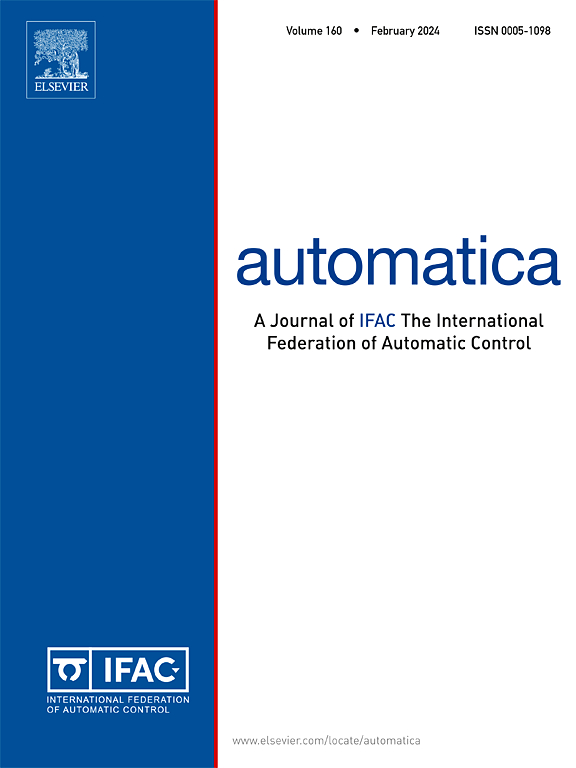Time-varying output formation tracking of linear disturbed multi-agent systems by dynamic protocols
IF 5.9
2区 计算机科学
Q1 AUTOMATION & CONTROL SYSTEMS
引用次数: 0
Abstract
This work proposes new conditions for the time-varying output formation tracking (HTVOFT) problem of identical linear multi-agent systems subject to exogenous disturbances in directed communication graphs. The proposed conditions allow the designer to choose the order of the protocol, including static, reduced, or full-order dynamic controllers. New sufficient linear matrix inequalities (LMI) conditions are presented to solve the HTVOFT problem with guaranteed performance. By proposing a polytopic LMI representation, we present a procedure that allows the design of protocol gains for a family of topologies regardless of the number of agents. Numerical experiments illustrate the effectiveness of the proposed approach.
基于动态协议的线性扰动多智能体系统时变输出编队跟踪
本文提出了有向通信图中受外生干扰的相同线性多智能体系统的H∞时变输出编队跟踪(HTVOFT)问题的新条件。所提出的条件允许设计者选择协议的顺序,包括静态、简化或全阶动态控制器。为了解决具有保证H∞性能的HTVOFT问题,提出了新的充分线性矩阵不等式(LMI)条件。通过提出一个多向LMI表示,我们提出了一个过程,该过程允许为一系列拓扑设计协议增益,而不管代理的数量。数值实验验证了该方法的有效性。
本文章由计算机程序翻译,如有差异,请以英文原文为准。
求助全文
约1分钟内获得全文
求助全文
来源期刊

Automatica
工程技术-工程:电子与电气
CiteScore
10.70
自引率
7.80%
发文量
617
审稿时长
5 months
期刊介绍:
Automatica is a leading archival publication in the field of systems and control. The field encompasses today a broad set of areas and topics, and is thriving not only within itself but also in terms of its impact on other fields, such as communications, computers, biology, energy and economics. Since its inception in 1963, Automatica has kept abreast with the evolution of the field over the years, and has emerged as a leading publication driving the trends in the field.
After being founded in 1963, Automatica became a journal of the International Federation of Automatic Control (IFAC) in 1969. It features a characteristic blend of theoretical and applied papers of archival, lasting value, reporting cutting edge research results by authors across the globe. It features articles in distinct categories, including regular, brief and survey papers, technical communiqués, correspondence items, as well as reviews on published books of interest to the readership. It occasionally publishes special issues on emerging new topics or established mature topics of interest to a broad audience.
Automatica solicits original high-quality contributions in all the categories listed above, and in all areas of systems and control interpreted in a broad sense and evolving constantly. They may be submitted directly to a subject editor or to the Editor-in-Chief if not sure about the subject area. Editorial procedures in place assure careful, fair, and prompt handling of all submitted articles. Accepted papers appear in the journal in the shortest time feasible given production time constraints.
 求助内容:
求助内容: 应助结果提醒方式:
应助结果提醒方式:


